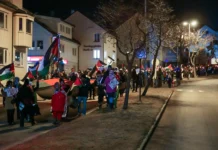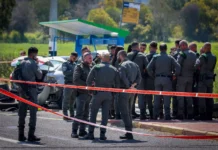Take three well-positioned, sun-dappled islands between Italy and north Africa, add input from pretty much every major power through history – Phoenicians, Carthaginians, Greeks, Romans, Byzantines, Arabs, Normans, Sicilians, Spain, the Knights of St. John, France, and Britain – an enveloping Roman Catholic presence, towering fortresses, citadels, and rock temples; an azure sea and some of the freshest fish you’ll ever savour, and you have a rough idea of Malta.
A peaceable EU country within easy reach of European capitals, Malta has unwittingly been thrust into headlines of late with the murder of local journalist Daphne Caruana Galizia, who led the Panama Papers investigation into corruption in the country.
There’s a huge flower-strewn memorial to Caruana Galizia in Malta’s modern and hip capital, Valletta, and residents are sad and frightened about the murder, but hopeful that an FBI-assisted investigation will at last expose corruption. Galizia’s family pointedly insisted that no government leaders attended her funeral.

For the Jewish traveller, Malta satisfies. Though there are only about 200 Jews here, of whom roughly half are native-born, the nation is redolent with Jewish history (in case you were wondering, Christopher Marlowe’s 1590 play, The Jew of Malta, is never brought up).
Catholics here smile at the mention of the first Jew in Malta. Saul of Tarsus had been a wealthy tent-maker until his blinding conversion to Christianity. En route to Rome to face trial, Saul, now named Paul, was shipwrecked in Malta around 60 CE and stayed a few weeks.

It’s estimated that 30,000 Israelis visit Malta each year, and this summer, Air Malta began flying direct from Tel Aviv. Earlier this year, the U.S.-Canada tour agency Exclusively Malta, working with the Malta Tourism Authority, created a “Jewish culture” package.
Our bold and brassy guide, Nadine Fenech, a proud Maltese and Zionist, informs us of several Jewish place names: Wied Sansun (Samson’s Valley), Ghar Lhudin (Jewish Fountain), and Misrah Lhudi (Jews’ Square). In the walled city of Mdina, we find a sign for “the Old Jewish Silk Market.”
And in the capital, free Jews – those who were not enslaved by the Knights of St. John – had to enter and leave from “Jews sally port.” Don’t forget to visit the “Jews Sally Port Snack Bar.”
Even Malta’s smallest island, Comino, almost uninhabited today, is famous as the home of Spanish mystic and kabbalist Avraham Abulafia, who is said to have composed his best-known works around 1290 while in exile here.
The community prospered until 1492, when the Edict of Expulsion forced out all Jews from Malta and Sicily. They were replaced by Jews from the Ottoman Empire and other places. These Jews had been captured by the Knights of St. John but could not be sold as slaves or redeemed. The Knights Hospitaller, who still form a huge footprint here, were finally thrown out of Malta by Napoleon. Jews then arrived from Gibraltar, England, Italy, Portugal, and North Africa.
We didn’t see them, but deeds and other documents written by Jewish notaries in Maltese but with Hebrew script are stored in the Mdina cathedral museum. They are said to be the earliest known texts in Maltese, dating as far back as the 14th century.
A synagogue stood in Valletta until 1979, when surrounding demolition rendered it unstable. A new one was founded in 2000 in Ta’Xbiex, about five kilometers away, in a non-descript Florida-style “mansion” on Enrico Mizzi Street. Up a darkened flight of stairs is the sanctuary with about 20 chairs, a centra l bimah and aron kodesh, a room used for children’s classes, and a long table, where we encounter the community’s unofficial leader, Reuben Ohayon.
l bimah and aron kodesh, a room used for children’s classes, and a long table, where we encounter the community’s unofficial leader, Reuben Ohayon.
A small, soft-spoken man, Ohayon, 55, can trace his family’s roots to Portugal and Morocco. He runs a luggage import and repair shop in Valletta but spends 90 minutes every morning davening at the small shul. He also tends the community’s three Jewish cemeteries (the oldest is for Jewish slaves, and Ohayon is now negotiating for more space for the newest one). He’s no longer the community’s shoichet, as kosher food is imported from Belgium and Israel. A mikvah opened a few years ago.
This being Shabbat, no photos or notes may be taken. Ohayon is hoping for a minyan but he’s several men short. He leads the Sephardi-style service but with an Ashkenazi prayerbook. Sitting nearby is Rabbi Chaim Shalom, who established a Chabad Centre here in 2013 and set up “L’Chaim,” the country’s sole kosher restaurant, both in the nearby seaside town of St. Julian’s.
The community has six Torah scrolls. One of them, a gift from an Iranian-English Jew, is housed in a magnif icent silver filigreed capsule.
icent silver filigreed capsule.
Asked about the Holocaust era, Ohayon relates that the country’s Jews were unscathed (many joined the British army) but he recalls his father Avraham and others hid for months in underground shelters to escape German bombing. Some German Jews even found haven on the islands in the 1930s because Malta (a British colony until 1964) was the only European country that didn’t require visas for Jews to enter.
Ohayon proudly related that there is no anti-Semitism here. Malta’s parliament commemorates Yom Hashoah and on Malta’s second-largest island, Gozo, a moment of silence is observed. Relations with Israel, he said, are good, though the ambassador to Malta lives in Israel and visits only every two months. In 2013, Prime Minister Joseph Muscat became the first Maltese leader to visit Israel, Ohayon said.
Several dozen Israelis have settled here, working in finance and hi-tech but also in the gambling industry, as Malta’s rules in that area are said to the loosest in the EU.
Displayed in the synagogue are several Purim-themed drawings made by some of the 60 children who attend weekly classes. “They are our future,” Ohayon said. Asked about Jewish emigration, he paused and pointed to the luminous November day outside, with its puffs of briny sea air and the vague scent of a dozen kinds of wild flowers. “Why would anyone leave?” he asked.

























